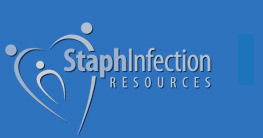This is part 2 of a series covering the use of topical chlorhexidine soap for infections and decolonization and will cover side-effects, precautions and issues with growing bacterial resistance.
Chlorhexidine is routinely used as a topical skin antiseptic to inhibit or kill bacteria like MRSA and Staph. While it’s generally safe, chlorhexidine does has side effects, some are which are very serious. Chlorhexidine washes are commonly used in hospitals to reduce hospital infection transmission, as hand scrubs and as part of decolonization procedures used at home. It’s been studied and has generally been shown to reduce hospital acquired infections and has reduced or eliminated MRSA bacteria on people’s skin (colonization).
Chlorhexidine Side Effects
Chlorhexidine used on the skin as a soap is generally well tolerated, but it can cause some side effects.
- It can be a skin irritant and cause skin itching, irritation and redness.
- Side effects may also include pain and skin peeling.
- Severe side effects can include allergic reactions including hives, rashes, blisters, or trouble breathing or swelling in the tongue, face, mouth or feet.
- If you experience any side effects, be sure to contact your physician immediately.
Chlorhexidine Precautions
- Chlorhexidine is not meant to be used near or in the eyes or ears. It can cause severe and permanent eye damage.
- When used topically, it’s not meant for use in children under 2 months of age.
- It is not meant for long term use.
- Do not swallow it.
- It may also stain clothing when used with bleach. Use non-chlorine products to clean fabrics that have chlorhexidine stains.
- Some chlorhexidine products also contain high amounts of alcohol and can be flammable.
Disclaimer: Be sure to follow your doctor’s instructions on the correct use. This list does not cover all possible side effects, uses or precautions, so be sure to consult with your health care provider if you have any symptoms or questions.
Other articles you may be interested in
Chlorhexidine baths for MRSA decolonization
Chlorhexidine resistance is growing – should we be concerned?
Another risk of using chlorhexidine is the growing resistance of MRSA and other bacteria. Chlorhexidine resistance among various strains of bacteria including MRSA has been growing, meaning MRSA is growing more immune to the use of this antiseptic. Certain strains of MRSA may actually be unaffected by Chlorhexidine use, which could cause some strains to spread more rapidly.
It’s been recommended in various studies that chlorhexidine resistance should be monitored in health care facilities. This acquired resistance has been growing over the years and may render this antiseptic unusable against some strains of MRSA and account for decolonization failure.
Safer ways to control MRSA
Many people are looking for effective ways to reduce pathogenic skin bacteria like MRSA without the dangerous side effects of chlorhexidine washes. People are growing more aware of the growing resistance of MRSA to chlorhexidine and antibiotics. In addition, what you put on your skin enters into your body and chemicals and antimicrobials can effect your good and healthy bacteria that protect you from disease and infection.
There are many alternatives for reducing skin bacteria, including the use of antibacterial medicinal strength essential oils. I have a few favorite essential oils that are effective against bacteria, such as Tea Tree and special antibacterial blends. Essential oils can be used directly on your skin, in your nose and for washes and bathing. I’ve heard many people who have decolonized from MRSA using these safer alternative choices and by boosting their natural defenses. I cover these alternatives in this blog and in more detail in my books and program.
To your best health,
Michelle Moore
Author and Natural Health Educator
References
Efficacy and limitation of a chlorhexidine-based decolonization strategy in preventing transmission of methicillin-resistant Staphylococcus aureus in an intensive care unit. Clin Infect Dis. 2010 Jan 15;50(2):210-7.
https://jac.oxfordjournals.org/content/62/3/514.full.pdf
Chlorhexidine topical https://www.drugs.com/mtm/chlorhexidine-topical.html




